I discovered Lisa at Mommy’s Apron Strings as another Project Run & Play sewalong participant. I noticed right away that she loved vintage patterns and used fun details like smocking. This fun Pink Polka Dot Pop – Top and Pants was her entry into the stripes and polka dots themed week:
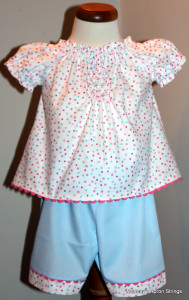
I’ve been sharing a bit of history or fun fact about the different styles as part of the series, but Lisa gives her own lesson in her entry, so I’ll let her take it away:
Hi, I’m Lisa and I blog at: Mommy’s Apron Strings
I am happy to be visiting a Jennuine Life today to share with you one of the Lost Arts of Sewing. My post is a little bit different, in that I am not sharing a technique, but some history about how ladies sewed in the past. I am also offering a FREE vintage sunsuit pattern and machine embroidery design!
I have loved sewing of all types for many years. I started smocking when I was 10 and haven’t stopped. I have made many outfits for my 5 children and I cherish the photos of them in the clothing I made.
Recently, I joined a group that shares their love of PDF sewing patterns. It has given me a feel for what many young Moms and beginner sewists like. They like the PDF patterns because they are instant download, come in many sizes, have excellent directions with many photos, and there is a wide range of styles available at a click.
But this world of choice and convenience is a recent development! When our mamas, grandmas, and great-grandmas wanted to sew for their families, things were very different. Madame Demorest was the first to offer patterns in one size in 1860. In 1863, Ebenezer Butterick was the first person to start selling graded (available in different sizes) sewing patterns. In 1870 James McCall started his company and 2 of the biggest pattern companies were born. At this time, the patterns were pre-cut pieces of tissue paper, with no printing and very scant directions. By the 1890s, these unprinted patterns were widely available and many companies had sprouted up: Pictorial Review, May Manton’s, and Ideal (for Montgomery Ward) for a few.
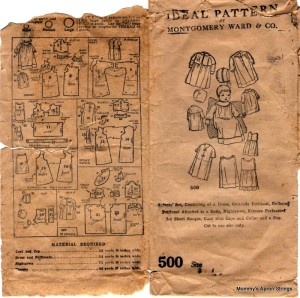 |
| Early Ideal Layette Pattern |
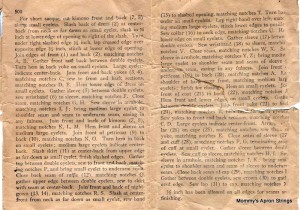 |
| Here are your only directions! |
In the early 1900s, Butterick started including a separate instruction sheet, which was enlarged and improved in the early 20s as the “Deltor.â€
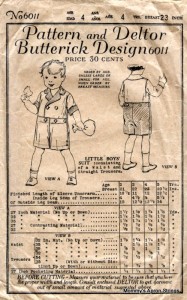 |
| 1920s Butterick pattern |
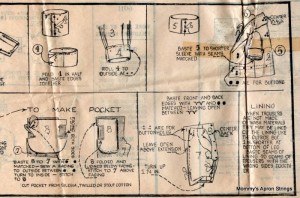 |
| Example of Butterick Deltor |
In 1919, McCall also improved their patterns by printing directions directly on the pieces, to resemble blueprints.
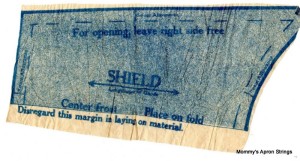 |
| Example of a McCall “Blueprint” pattern piece- circa 1919 |
McCall was also the first to use a full-color illustration on the covers, starting in 1932. These early color patterns are quite collectable and often sell for $30-60.
In 1927, Simplicity Patterns sold their first patterns, which were known for being easy-to-sew, every-day clothing.
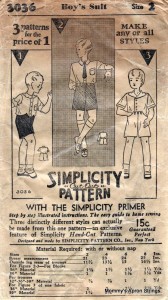 |
| Early Simplicity Pattern, c 1929 |
In the early 30s, 2 more brands joined the mix. Superior Patterns, which were exclusive to Sears and Advance, which was JC Penney’s brand. Now women could shop for patterns, fabric, and notions at their favorite department store.
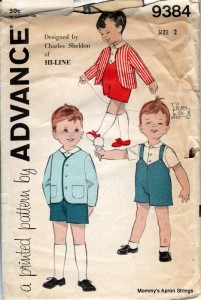 |
| This Advance is c. 1950 and I made it! |
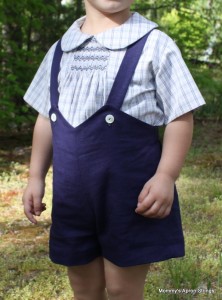 |
| I really do sew these patterns! |
Hollywood, DuBarry, and New York patterns also started around this time. These were very stylish: Hollywood patterns featured a movie-star on each pattern.
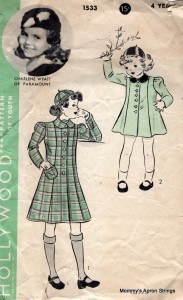 |
| Charlene Wyatt of Paramount was featured on this Hollywood Pattern from the 40s. |
Starting in the 1930s, many mail-order pattern companies started: Anne Adams, Marian Martin, Sew-Rite, Spadea, Alice Brooks, Patt-O-Rama, and Laura Wheeler. These companies advertised in ladies’ magazines and offered crochet and knitting patterns as well as sewing.
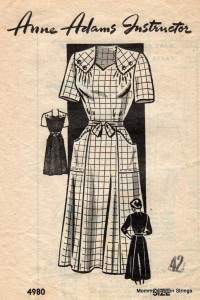 |
| Anne Adams Ladies’ Dress |
McCall was the first to switch to all printed patterns. They were a leader in the industry and are among my favorite vintage patterns. Their name changed from McCall to McCall’s in 1951. They were followed by the other brands. Here’s a fun look at a Simplicity pattern I have in both versions: printed and unprinted.
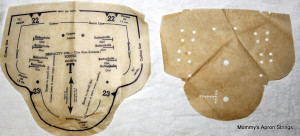 |
| Example of the same bootie pattern piece in printed and unprinted. |
Another interesting offering of McCall patterns were their patterns that came with transfers. They offered many of these from the 30s to the 50s and the embroidery designs are lovely. They were a great idea, because the embroidery designs were made to fit the exact item.
They also offered transfers on their own, which were called “Kaumagraph†transfer patterns.
Once printed patterns with good instructions were the norm, not much changed until recently. Sewing Mamas today can enjoy all the benefits of PDF patterns: instant download, shop at home, photo tutorials, wide range of sizes and styles, and even being able to speak to the designer by email or on facebook if you get stuck!
To celebrate my first guest post, I have a wonderful FREE pattern to offer you today. It has the vintage style of the 1950s combined with all the conveniences of a PDF pattern. I present:
Tim & Mary’s Sunsuit
This is a sunsuit with shoulder-ties and open romper legs with a snap crotch. You can make it lined or 1-layer with bias binding. The fit is loose and comfy for summer! It comes in sizes 6 months to 3 and is perfect for novelty prints or embroidery- by hand or machine. In fact, I am giving you this adorable puppy face machine embroidery design, too.
To get your FREE Sunsuit pattern, check out my blog today: Mommy’s Apron Strings
Thanks so much for offering this great free pattern!

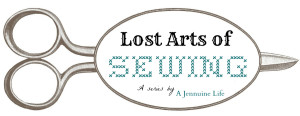
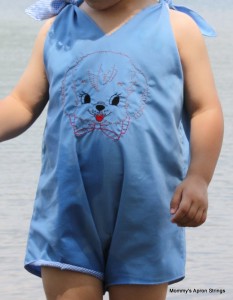
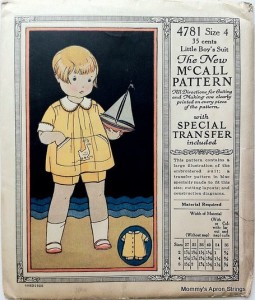
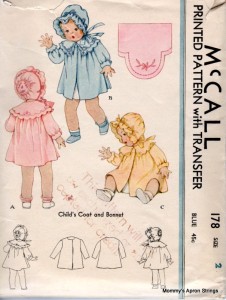
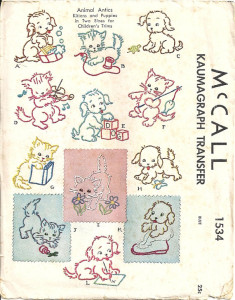

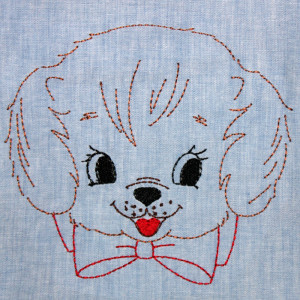


I don’t know how I missed this guest post, Lisa! I originally saw the sunsuit you made for Frances Suzanne’ little niece. You did a wonderful job with the history of sewing patterns. I learned so much! Thank you!